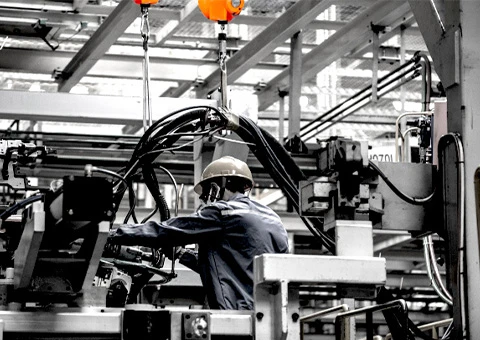small gantry system
The Rise of Small Gantry Systems Revolutionizing Automation in Industrial Applications
In an era where efficiency and precision are paramount, the small gantry system has emerged as a pivotal solution in various industrial applications. These compact and versatile systems are transforming the way automation is integrated into manufacturing, logistics, and even laboratories. By delivering both speed and accuracy, small gantry systems are setting new benchmarks for operational excellence.
What is a Small Gantry System?
A small gantry system typically consists of a stable frame, a moving platform, and one or more linear actuators. This configuration allows the system to precisely position tools, components, or products across an X and Y axis, and in some cases, along the Z axis as well. Unlike traditional robots or CNC machines, small gantry systems can be designed to occupy less space while delivering comparable or even superior performance.
Benefits of Small Gantry Systems
1. Space Efficiency One of the most significant advantages of small gantry systems is their compact design. They can be installed in spaces that are too tight for larger machinery, making them ideal for small workshops or laboratories where every square foot counts.
2. Flexibility and Modularity Small gantry systems can be customized and configured to fit the specific needs of various applications. Their modular nature allows businesses to scale up or adapt the systems to accommodate changing requirements without the need for extensive retrofitting.
3. Cost-Effectiveness By automating repetitive tasks, small gantry systems minimize labor costs and the likelihood of human error. Over time, the savings accumulated from increased efficiency and reduced waste can be substantial.
4. Precision and Accuracy These systems are designed for high-precision applications, which makes them suitable for industries where minute tolerances are critical, such as electronics assembly, medical device manufacturing, and micro-machining.
small gantry system

5. Ease of Integration Modern small gantry systems are generally compatible with various software and hardware interfaces, facilitating seamless integration into existing production lines or lab setups. This adaptability is crucial for businesses looking to enhance their automation capabilities without overhauling their entire infrastructure.
Applications of Small Gantry Systems
Small gantry systems find applications in a multitude of sectors
- Manufacturing In assembly lines, they assist in the precise placement of components, ensuring accuracy and consistency throughout the production process. - Logistics In warehouses, small gantry systems can automate the picking and packing processes, greatly improving efficiency.
- Laboratory Automation In private and commercial laboratories, these systems are used for tasks such as sample handling and processing.
- 3D Printing Small gantry systems can also serve as platforms for 3D printers, where their precision ensures high-quality prints.
Future Prospects
As technology continues to advance, the capabilities of small gantry systems are expected to expand further. Innovations in materials, sensors, and AI will likely enhance their efficiency and intelligence, paving the way for more sophisticated applications. Additionally, as industries increasingly embrace automation, the demand for small gantry systems is projected to rise, leading to more competitive designs and pricing.
In conclusion, small gantry systems are revolutionizing the landscape of automation across various industries. Their compact design, flexibility, precision, and cost-effectiveness make them an attractive option for businesses looking to optimize their operations. As we move towards a more automated future, the role of small gantry systems will undoubtedly become even more significant, helping industries achieve new levels of performance and productivity.
-
Unlock Seamless Relocation with Our Heavy Equipment Moving ExpertiseNewsJun.06,2025
-
Unleash Unrivaled Flexibility with Our Adjustable Gantry CraneNewsJun.06,2025
-
Unleash Heavy-Duty Efficiency with Our Industrial Gantry Crane SolutionsNewsJun.06,2025
-
Revolutionize Steel Handling with Our Magnetic Lifter RangeNewsJun.06,2025
-
Master Equipment Mobility with Premium Machinery Mover SolutionsNewsJun.06,2025
-
Elevate Your Material Handling with Magnetic Lifter TechnologyNewsJun.06,2025
-
YS Permanent Lifting Magnets: The Smarter Way to Handle SteelNewsMay.22,2025
